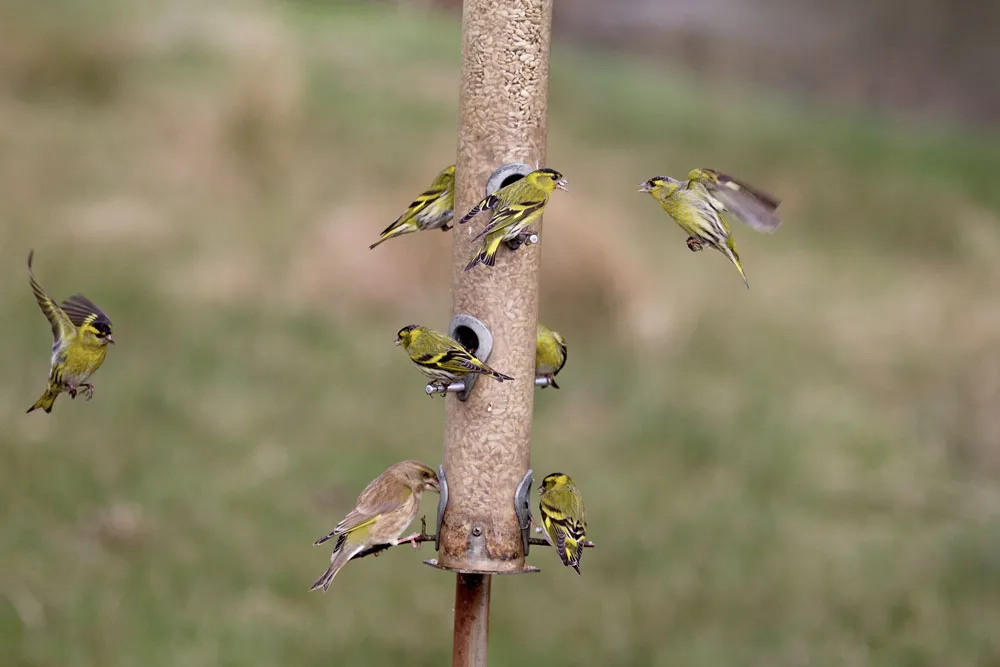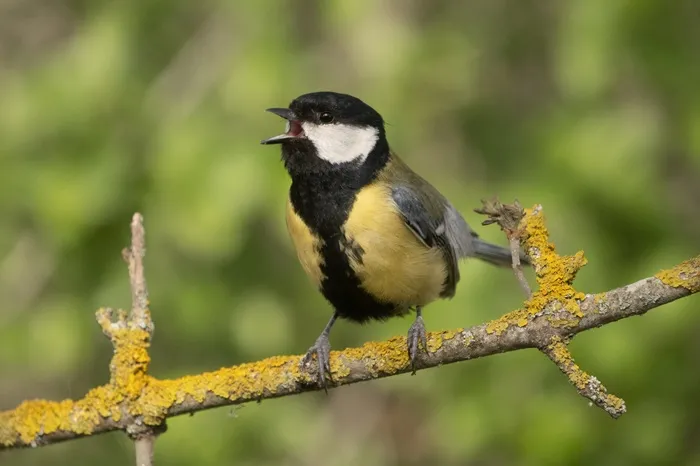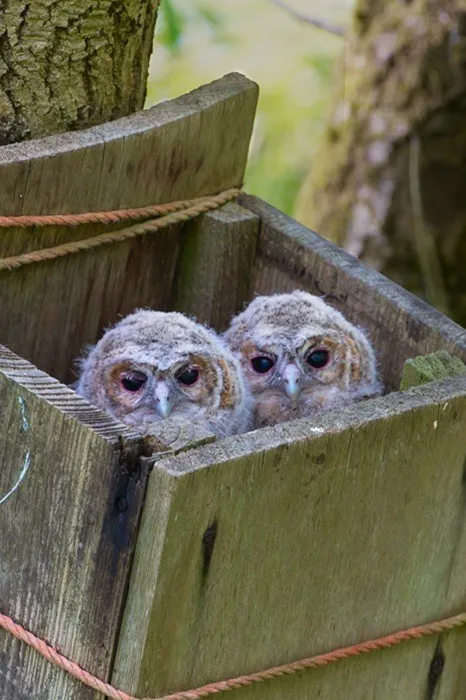Spend any time watching your gardens birds and you'll soon discover a host of different behaviours. It might be a Blackbird preening its feathers, a group of Starlings whirling about the sky in a pre-roosting flock or a Greenfinch showing a Blue Tit who is boss.
For many people, watching bird behaviour is the main reason for watching birds (even if they are not aware of it)! Many different behaviours can be studied by watching garden birds and this approach can reveal a rewarding insight into their lives.
Eating fruits and berries
Learn about this behaviour, when it occurs, which species you’re most likely to see feeding on fruits, and which berries and fruit birds like to eat.

Activity patterns
You might have noticed a distinct pattern in the levels of activity at your garden feeders. But why is this?

Caching food
Saving and storing food is a behaviour known as caching, and is typically observed during the autumn months.

Courtship feeding
A male bird offering food to his mate is known as courtship feeding, but it actually occurs most often after courtship is over.

Crop milk
What exactly is crop milk, which birds produce it, and why is it so important? Learn more about this unusual food.

Incubation
Incubation is the period of time during which adult birds tend to their developing eggs, caring for them before they hatch.

Infidelity
Garden bird enthusiasts might be surprised – shocked even – to discover the goings on in their own back gardens.

Keeping warm
The effect of long winter nights on small birds can be pronounced. How do they ensure they have enough energy to keep warm?

Personalities
Over recent years, scientists have become increasingly interested in the personalities of birds. Learn what their research has revealed.

Preening, sunbathing and bathing
A bird's feathers are vital for flight, camouflage, courtship, warmth and more. How do birds keep them healthy?

Plumage abnormalities
Every now and then you might spot a bird with unusual plumage. But what is behind this?

Featured behaviour
Birds and play
There are notable differences between the behaviours exhibited by birds and those shown by mammals. While birds demonstrate rapid learning ability, they do not, for example, generally exhibit the diversity of 'play' behaviours seen in mammals.
This particular difference is thought to have its origins in the speed with which young birds develop. Young birds often attain their adult size and weight in just a few weeks, equivalent to about 1% of their total life expectancy. The comparable figure in most mammals is closer to 30%. The accelerated rates at which birds develop may therefore enable rapid learning but preclude play.
